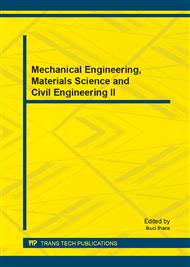p.703
p.707
p.712
p.717
p.722
p.729
p.733
p.738
p.743
A Link Evaluation Method Employing Statistical Means of Received Signal Strength Indicator and Link Quality Indicator for Wireless Sensor Networks
Abstract:
This paper is concerned with a wireless receiving link evaluation method using statistical means of received signal strength indicator (RSSI) and link quality indicator (LQI) based on the IEEE 802.15.4 protocol for wireless sensor networks. Traditional methods using single RSSI and single LQI based on the IEEE 802.11 protocol have the disadvantage of the inaccurate evaluation. In this paper, we carry out a quantitative emulation experiment via computing statistical means of RSSI and LQI based on wireless sensor networks protocol of IEEE 802.15.4. Tested numerical values are analyzed using MATLAB and SPSS by defining the wireless link evaluation sensitivity. Result curves of RSSI to packet reception rate (PRR) and LQI to PRR we finally derive are shown that statistical means of RSSI and LQI can obtain the status information of receiving links more accurately, compared with the traditional wireless link evaluation using single RSSI and single LQI.
Info:
Periodical:
Pages:
722-728
Citation:
Online since:
December 2013
Authors:
Price:
Сopyright:
© 2014 Trans Tech Publications Ltd. All Rights Reserved
Share:
Citation:


